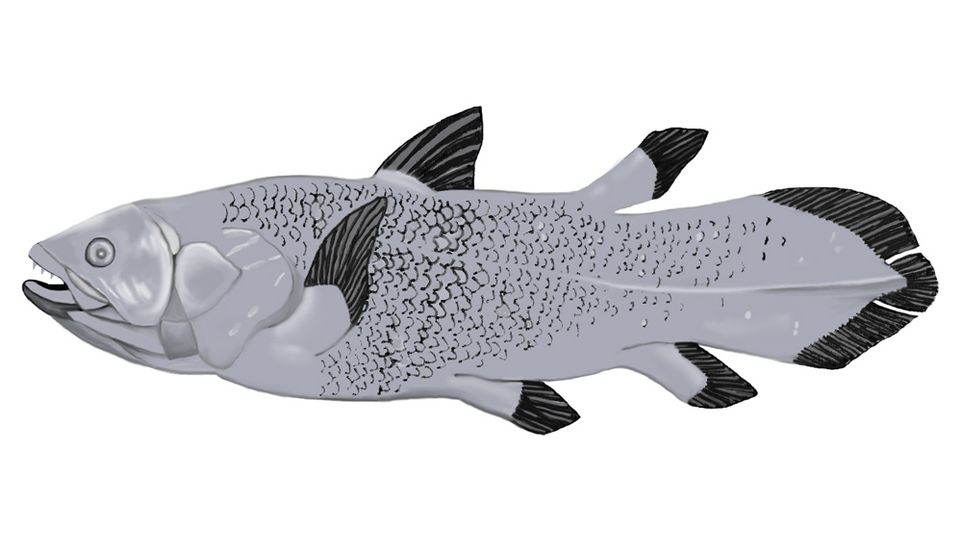
From coelacanths to humans

Bitter receptors are a relatively recent invention of nature. What 400 million years of evolutionary history reveal about the function of both fish and human bitter receptors shows a recent study.
02/03/2021 · Lebenswissenschaften · Leibniz-Institut für Lebensmittel-Systembiologie an der Technischen Universität München · News · Forschungsergebnis
To evaluate the chemical composition of food from a physiological point of view, it is important to know the functions of the receptors that interact with food ingredients. These include receptors for bitter compounds, which first evolved during evolution in bony fishes such as the coelacanth. What 400 million years of evolutionary history reveal about the function of both fish and human bitter receptors was recently published in the journal Genome Biology and Evolution by a team of researchers led by the Leibniz Institute for Food Systems Biology at the Technical University of Munich and the University of Cologne.
Evolutionarily, bitter receptors are a relatively recent invention of nature compared to other chemoreceptors, such as olfactory receptors. Their function of protecting vertebrates from consuming potentially toxic substances has long been scientifically recognized. More recent are observations that bitter receptors have other functions beyond taste perception. These include roles in defense against pathogenic bacteria, in metabolic regulation, and possibly also functions as sensors for endogenous metabolites and hormones.
Coelacanth and zebrafish in comparison
The team of scientists led by biologists Sigrun Korsching of the University of Cologne and Maik Behrens of the Leibniz Institute for Food Systems Biology now provides further evidence to support this hypothesis. In their current study, the team compared two original bitter receptor types from the coelacanth (Latimeria chalumnae) with four others from the zebrafish (Danio rerio) phylogenetically, functionally and structurally. To this end, the research team conducted, among other experiments, extensive functional studies using an established cell-based test system as well as a computer-based modeling approach. The goal was to gain a deep insight into the evolutionary history of bitter receptors in order to learn more about their functions.
As the study results show, both fish species possess, amongst others, a pair of homologous bitter receptor genes that presumably arose from a primordial gene. In this regard, the bitter recognition spectra of these fish receptors were largely identical despite 400 million years of separate evolution, according to the results of the functional studies. "What is particularly exciting about our results is that the original fish receptors recognized substances in the cellular test system which are still detected by human bitter receptors to date. These include bile acids," says co-author Antonella Di Pizio of the Leibniz Institute.
Over 400 million years of selection pressure
"So there must have been selective pressure at least until humans evolved, that means human bitter receptors can still detect the same bitter substances as a bony fish did over 400 million years ago," concludes taste researcher Maik Behrens. Sigrun Korsching adds, "This speaks for one or more important functions of bitter receptors, even during human evolution."
"Coelacanths are carnivores. Therefore, one could speculate that the existence of a bitter receptor variant that mainly recognizes steroid hormones and bile acids protects against the consumption of poisonous fish, which can contain not only bile acids but also highly potent neurotoxins in their liver and gallbladder. For example, the poisonous puffer fish Arothron hispidus lives in the same waters as the coelacanth," says Maik Behrens. "In humans and also in zebrafish, however, it is questionable whether such a receptor variant would have been preserved from an evolutionary point of view if it did not have other functions inside the body. Another argument in favor of such extraoral functions is that bitter receptors are also found on human organs such as the heart, brain or thyroid gland," Behrens added. One goal of his research is to help understand the effects of bitter substances on a systems biological level, regardless of whether they entered the body through food or whether they belong to the body's own substances.
Original publication
Behrens M, Di Pizio A, Redel U, Meyerhof W, Korsching SI (2020) Genome Biol Evol, evaa264, DOI: 10.1093/gbe/evaa264. At the root of T2R gene evolution: Recognition profiles of coelacanth and zebrafish bitter receptors
https://academic.oup.com/gbe/advance-article/doi/10.1093/gbe/evaa264/6045956